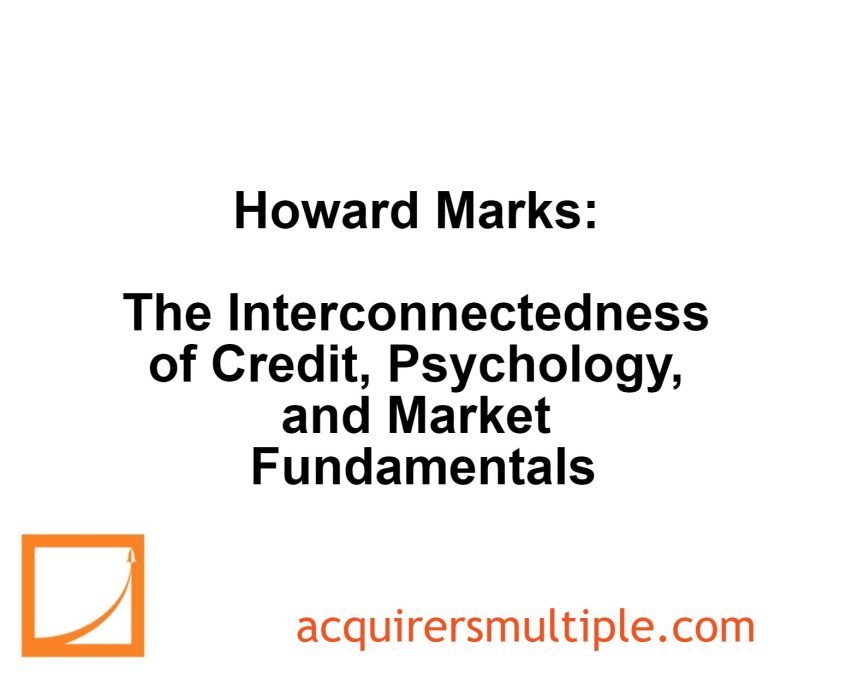In his book Mastering The Market Cycle, Howard Marks explains how understanding the interplay between market fundamentals and psychology is crucial, though it’s far from a neat or predictable process.
Events can enhance psychological confidence, which in turn can bolster the economy and corporate profits, or vice versa. This interaction is not one-directional; it can occur simultaneously in both directions, with variable speeds and unpredictable sequences across different market cycles.
These dynamics make investing an inexact science, reflecting Mark Twain’s idea that history “rhymes” rather than repeats. Fundamentals, psychology, and the availability of credit intertwine to drive asset prices and shape market cycles, affecting stocks, bonds, gold, and currencies alike.
Here’s an excerpt from the book:
It’s important to understand the way fundamentals and psychology interact, as described above. But it’s essential that I repeat something about this process: while the description above is of one that is orderly and sequential, the process is nowhere as neat as this description may make it seem. The sequence in which these things occur is subject to change, as is the very direction of causality.
- Sometimes events cause psychology to strengthen, and sometimes improving psychology has a positive impact on events (for example, bolstering the economy and corporate profits).
- And while it’s obvious that improved investor psychology makes asset prices rise, it’s just as obvious that rising prices make investors feel wealthier, smarter and more optimistic.
So, in other words, these relationships can work in both directions . . . and even do so simultaneously. And each can cause the other. The speed at which things play out is highly variable from cycle to cycle and over the course of a given cycle. And lastly, cycles don’t necessarily progress smoothly; rather, they can be marked by dips, recoveries and feints along the way.
It’s for reasons like these that investing can’t be described as scientific, and can’t be depended on to work the same every time. I keep coming back to Mark Twain’s observation that “history doesn’t repeat itself, but it does rhyme.” The reasons and results are never the same as in the past, but they’re usually reminiscent of developments we’ve seen before.
Regardless of the imprecision of the process, it’s clear that past events and expected future events combine with psychology to determine asset prices. Events and psychology also influence the availability of credit, and the availability of credit greatly affects asset prices, just as it feeds back to influence events and psychology.
In sum, these things all come together to create the market cycle. We hear about it every day, most prominently in connection with the ups and downs of the stock market, but also with regard to markets for things like bonds, gold and currencies. This is where many cycles intersect, and it’s the subject of this chapter.
You can find a copy of the book here:
For all the latest news and podcasts, join our free newsletter here.
Don’t forget to check out our FREE Large Cap 1000 – Stock Screener, here at The Acquirer’s Multiple:



